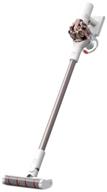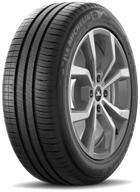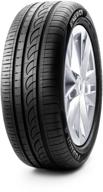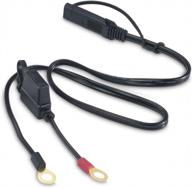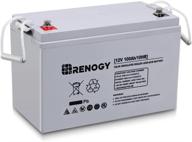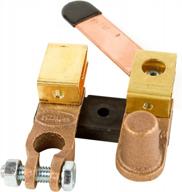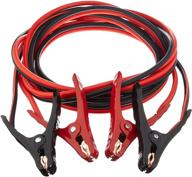Power Up Your Ride: Must-Have Car Battery Essentials
A reliable car battery is essential for keeping your vehicle running smoothly. But batteries don't last forever and will eventually need to be replaced. When that time comes, be sure you select the right battery for your make and model of car. Here are some must-have products and accessories to power up your ride.
The Right Replacement Battery
When looking for a new battery, the most important factor is finding one that fits your vehicle properly. Consult your owner's manual or an auto parts store to find the correct size, type, and cold cranking amps (CCA) rating you need. Top battery manufacturers include:
- ACDelco
- Bosch
- DieHard
- Optima
Be sure to check the warranty and lifespan ratings when comparing different batteries. Models with higher CCA ratings are better suited for colder climates.
Battery Chargers
A battery charger can help keep your battery fully charged between uses of your vehicle. This helps extend the life of your battery significantly. Choose a smart charger that automatically stops charging when the battery is full. Popular portable chargers include:
- NOCO Geniusseries
- Battery Tender Plus
- Schumacher SC-1200A
Many car experts recommend charging your battery at least once a month during winter or if you don't drive very often. A dead battery can happen anytime.
Jump Starters
A jump starter is a must for any emergency kit. This portable device contains its own battery and cables to jump start your vehicle if the battery dies. Features to look for include:
- At least 1000 peak amps for larger vehicles
- LED light and USB charging ports
- Safety features like spark proof connections
Popular brands are NOCO and Jump-N-Carry. Don't wait until you need your jump starter to buy one!
Battery Testers
Using a battery tester periodically allows you to monitor your battery's state of charge and detect potential problems before they strand you. Choose a tester that is easy to use with a clear indicator display. Common types are:
- Simple load testers
- Multi-meter testers
- Electronic testers
Quality testers from Clore Automotive and Actron can help identify a weak battery and determine if it's time for a replacement.
Don't take your car battery for granted. With proper maintenance and these key products, you can keep your vehicle ready to handle anything the road throws at you.
Maximize Your Battery Life: Tips for Keeping Your Car Battery Going Strong
Your car's battery powers everything from ignition to headlights. Taking steps to maximize its lifespan will ensure you aren't left stranded with a dead battery. Use these tips to keep your car battery going strong for years.
Regular Cleaning
Over time battery terminals can become coated in corrosion which impedes electrical flow. Use a wire brush to clean terminals and connectors. Apply a protectant like dielectric grease to prevent future buildup. Check that connections are tight.
Proper Maintenance Charging
| Battery Type | Ideal Charge |
|---|---|
| Standard lead-acid | 12.4-12.6V |
| AGM | 12.8-13.2V |
| EFB | 12.6-12.8V |
Use a smart charger to maintain optimal charge level. Letting the battery drain too low damages plates. Undercharging causes sulfation buildup.
Avoid Extreme Temperatures
Heat causes battery fluid to evaporate and damages plates. Keep your car shaded when possible. Cold slows chemical reactions—warm the engine before charging in frigid weather.
Similar products
Drive Regularly
Make short trips or let your car sit too long and the battery may not fully recharge. Take a 20+ minute drive at least once a week to prevent discharge over time.
Watch Voltage
Check voltage periodically with an electronic tester. Consistently low readings under 12V indicate a weak battery. Replace it before it dies altogether.
Prevent Parasitic Drain
Devices that draw power with the ignition off drain your battery. Unplug or remove accessories when not in use. Disconnect the negative cable if your car sits more than 2 weeks.
Avoid Deep Discharges
Completely discharging a battery can damage its internal structure. Recharge as soon as possible after deep discharge and consider early replacement.
With proper care and maintenance, a quality car battery can deliver reliable starts for over 5 years. Follow these tips to maximize performance and lifespan.
Volts to the Rescue: Solutions for Common Car Battery Issues
Sooner or later every car battery will run into problems. Avoid getting stranded by learning solutions for the most common car battery issues.
Battery Not Holding a Charge
If your battery continually needs jumped, can't hold a charge for long, or the charging system warning light comes on, potential causes include:
- Worn out or old battery nearing end of life
- Sulfation from chronic undercharging
- Bad cell allowing electrical leak
- Parasitic drain from accessories
- Defective alternator not properly charging
Test the charging system, check for parasitic drains, and load test the battery. Typically a new battery is needed if holding less than 80% charge.
Corroded Battery Terminals
White or blue crusty buildup on terminals impedes electrical flow. Causes include:
- Chemical residue
- Electrolyte seepage
- Salt and dirt accumulation
Clean terminals and connectors with a wire brush or baking soda/water solution. Apply dielectric grease to protect from future corrosion.
Dead Battery
If your battery has no charge and can't crank the engine, common reasons are:
- Leaving lights or accessories on
- Alternator failure
- Normal battery wear out
- Extreme hot or cold weather
- Electrical system fault or parasitic drain
Jump start, recharge fully, and load test the battery. Replace if over 5 years old or tests bad. Inspect the charging system.
Battery Leaking Acid
Cracked battery case allows corrosive electrolyte to leak out. Causes include:
- Physical damage from debris or improper installation
- Overcharging
- Freezing temperatures
- Normal wear and tear
Neutralize acid leaks with baking soda and water. Wear gloves and goggles for safety. The battery must be replaced.
Diagnosing and addressing common car battery problems quickly can help avoid being stranded. Know the solutions so your car battery lasts longer.
Charging Ahead: The Latest in Car Battery Technologies
For over a century, the traditional lead-acid car battery has powered our vehicles. But new technologies are emerging to improve performance, lifespan, and efficiency.
Lithium-Ion Batteries
Lithium-ion batteries offer higher energy density, faster recharging, and significant weight savings over lead-acid. Main types include:
- Lithium iron phosphate (LFP)
- Lithium nickel manganese cobalt (NMC)
- Lithium titanate (LTO)
High cost remains a barrier, but lifespan equals or exceeds lead-acid. Lithium is more fragile and requires advanced safety systems.
Another interesting products
Advanced Lead-Acid Batteries
Innovations in traditional lead-acid batteries include:
- Carbon-enhanced AGM—Lasts 4-8 times longer by adding carbon to the negative plate.
- EFB—Uses absorbent glass mat to hold electrolyte instead of free-flowing acid.
- Hybrid AGM—Combines EFB and AGM technologies.
Continued development has improved charge acceptance, cold-cranking power, and cycle life.
Solid State Batteries
Replacing liquid electrolytes with solid materials will enable major advances:
- Faster charging
- Higher energy density
- Operates at very high and low temperatures
- Less risk of fires or explosions
Solid state lithium batteries could potentially double range. Commercial production remains years away.
Top products in 🔋 Car Batteries & Accessories
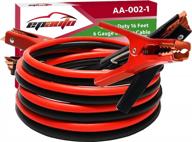

23 Review



23 Review

Graphene Batteries
Graphene's high conductivity and large surface area allow batteries to charge in seconds and store more energy. Benefits include:
- Charges up to 5 times faster
- 45% greater capacity
- Safety advantages
Graphene makes batteries cheaper, lighter and more sustainable. It has the potential to significantly extend EV range and revolutionize electrification.
Battery innovations will continue to evolve, providing more efficient, durable and practical power for tomorrow's electric cars.
Light 'Em Up: Illuminating Car Battery and Electrical Accessories
Your car's electrical system depends on the battery to power everything from headlights to windshield wipers. High quality accessories can improve visibility, prevent problems, and keep you on the road.
LED Lighting
Upgrade your stock bulbs to long-lasting LEDs. Options include:
- Headlights - Brighter and whiter light improves visibility.
- Interior lights - Use less power and don't burn out.
- Fog lights - Shine through inclement weather.
Choose a reputable brand like Philips or OSRAM for crisp bright output.
Emergency Kits
Every car should have a roadside emergency kit including:
- Reflective triangles - Alert other drivers if you're stopped.
- Flashlight - Illuminate the area at night.
- Jumper cables - Start your car if the battery dies.
Also pack blankets, non-perishable food, water, and basic tools.
Battery Maintainers
A battery maintainer connects to your battery to keep it fully charged when the car sits idle for extended periods. Opt for an automatic model that won't overcharge.
Dash Cams
Dash cams can monitor the road and some even keep an eye on your parked car. Features include:
- Collision recording if the car is hit.
- Night vision capability.
- GPS tracking.
Look for wide angle lenses and high resolution recording. Hardwire the cam to your car battery for continuous power.
Quality lighting, emergency gear, and electronics will keep you safe and visible on the road.
Stay Cranked: Key Products to Keep Your Car Battery Running Smoothly
A weak or dead battery can leave you stranded. Use these essential products to keep your car battery in top condition and avoid issues down the road.
Battery Charger/Maintainer
A dedicated battery charger is a must for any driver. Choose a smart charger that repair Mode and float Mode to optimize battery life. Key features include:
- Automatic charging cycles
- Reverse hookup protection
- LED indicators of charge status
- Ability to desulfate and recondition
Quality brands are NOCO, Battery Tender, and Deltran.
Jumper Cables
Cheap jumper cables lack sufficient copper and clamp strength to start a weak battery. Invest in a heavy duty set at least 10 gauge and with insulated clamps to prevent sparks.
Battery Terminal Protector
Prevent corrosion buildup by applying a protector spray or grease to battery terminals and connections. Good options are:
- No-OX-ID Grease
- Battery Protector spray
- Dielectric grease
Car Battery Tester
An electronic tester or multi-meter allows you to check voltage and diagnose problems early. Look for models from Clore Automotive or Actron.
Battery Blanket
In extreme cold, a battery blanket wraps around the battery to insulate it and keep it warm for easier starting.
Emergency Jump Starter
A portable jump starter like those made by NOCO can recharge a dead battery and get you back on the road. Compact lithium models provide multiple engine jumps.
Keeping your battery properly maintained and ready for reliable starts requires the right gear and accessories. Don't get left out in the cold!
How To Choose The Right Car Battery For Your Vehicle??
Choosing the right car battery for your vehicle can be a daunting task, but it is essential to ensure that your car runs smoothly. Here are some key factors to consider when choosing a car battery:
What Are The Differences Between Traditional Lead-Acid Batteries And Absorbed Glass Mat (AGM) Batteries??
Here are the differences between traditional lead-acid batteries and absorbed glass mat (AGM) batteries:
Differences in Construction:
Differences in Performance:
Differences in Cost:
It's important to note that AGM batteries are a type of lead-acid battery, but they differ in their construction and performance.
Deep Cycle Battery
A deep cycle battery is a type of battery designed to be regularly deeply discharged using most of its capacity. Here are some key points to know about deep cycle batteries:
Construction:
Performance:
Maintenance:
Applications:






